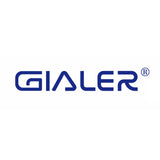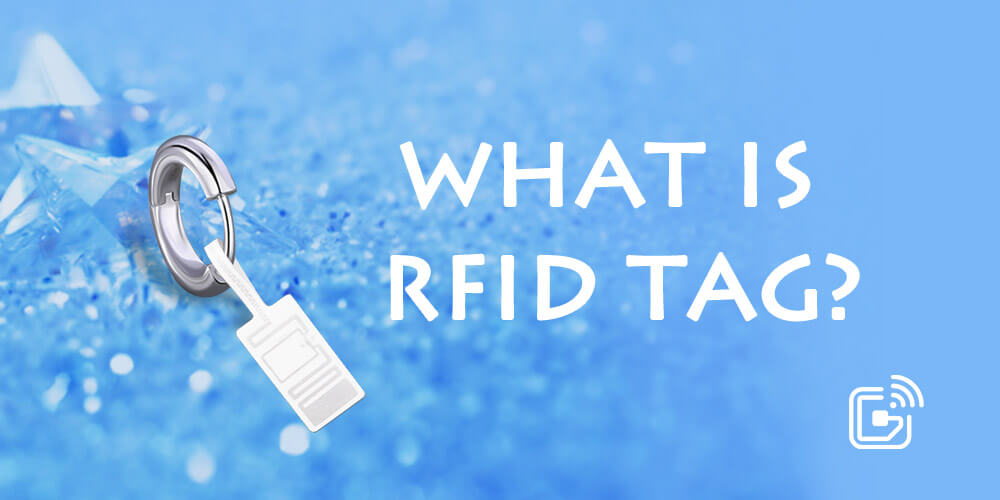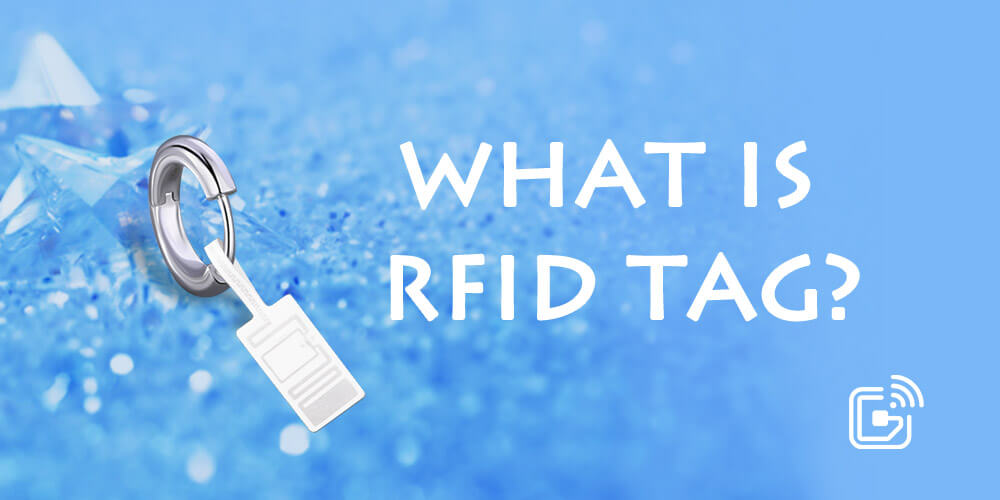
Radio-Frequency Identification (RFID) is one of the fastest-growing identification technology. It uses radio waves/ electromagnetic fields to capture and analyze digital data.
If that sounds confusing, then you shouldn’t worry! Continue reading as we explore all the elements of RFID tags and how they work.
How RFID Technology Works
An RFID tag is encoded with digital information about specific assets/ individuals. When the tag comes closer to an RFID reader, it will capture the radio waves produced by the reader. The reader/interrogator will then read and interpret the information.
The technology is being used in agriculture, education, transportation, and corporate access control.
If you’re wondering why the RFID technology gained significant traction globally, then here’s your answer. These are the features that have endeared it to its users:

- Available in Many Forms. RFID tags are available in different materials, shapes, sizes, and designs. The tag can be incorporated into plastic cards, badges, wristbands, smart posters, and many other materials.
- Diversity. RFID tags can be used in different sectors. It doesn’t matter whether you’re in the farming or retail sector; these tags will fit the bill.
- Easy to Use. Unlike barcodes, RFID tags do not require a line-of-sight to perform optimally. As long as you’re within an acceptable RFID reader range, the tag will pick the reader’s signals with ease.
- Customization. RFID tags allow you to tailor-make your data to suit your needs. You can even integrate any software in the reader to obtain specific data analytics on your mobile device.
RFID technology has become the favorite tracking and identification technique for many institutions/individuals due to these benefits.
RFID tags comprise four components:
- RFID chip. The chip provides memory and store data for the RFID tag. It can either be read-only or read and write programmable memory.
- Integrated Circuit (IC). This section is designed by a Semiconductor manufacturer. It requires to be powered, either by a battery or the reader’s electromagnetic waves.
- An antenna. Tags manufacturers design this component to receive signals from an interrogator.
- Substrate. The substrate is used to hold the three main components in place. It comes in different forms, including polyesters, polymers, papers, styrene, and PVC.
Additionally, RFID tags come in different sizes and designs. This diversity enables you to customize your tag to suit your needs and preferences.
RFID Tag Technology Types
RFID tags come in 3 main types, including:
These tags are also known as semi-passive tags. They are relatively new in the market, and they blend the features of both active and passive tags.
The battery-assisted passive tags have a power source that helps in capturing the signals from the reader. As such, these tags will have a wider read range than normal passive tags.
However, the tags do not have their transmitters, and they have to rely on the reader’s signals to function optimally.
Unlike the active tags, the passive ones lack a power source. As such, they rely on the signals sent out by the RFID reader antenna.
Immediately after the tags detect the signal, they will power and send back the data for analysis.
Due to this limitation, passive tags are only ideal when all you need is short-range tracking of assets. Additionally, the tags can be helpful in identification and inventory management.
The passive tags are classified based on their read ranges. The three categories include:
- Low-frequency passive tags
- High-frequency passive tags
- Ultra-high frequency passive tags
The classification is based on reading ranges (explained in the section below). Passive tags have the following unique features:
- They are smaller than active tags
- Relatively cheaper
- More flexible
Due to their small size, the tags can be embedded in many materials such as plastic, wristbands, and badges. They are commonly used for inventory management and personnel identification.
These tags are powered by a battery and have their transmitter. As such, they can detect radio waves from an RFID reader that’s up to 100 meters away. They are ideal for detecting or tracking mobile/ scattered assets, such as cargo containers, machines, and vehicles.
Also, most of the active tags have additional features that enhance their functionality. For example, they have sensors measuring humidity levels, temperature, vibration, and atmospheric pressure.
Due to these benefits, active RFID tags tend to be more expensive than passive ones. Also, they are relatively larger.
They come in two different forms, including:
- Transponders. These tags are designed to be detectors. They are only active when they detect a radio signal/ an electromagnetic wave from an RFID reader. For example, an access control tag with a specific transponder will only be active when approaching the restricted zone. This feature conserves battery and improves the life span of your tag.
- Beacons. Beacons are designed to emit a signal at intervals. The pre-set intervals can be tailor-made to suit your tracking needs. The beacons are useful when you need real-time data about the location of your assets. They are preferred for use in institutions such as hospitals, corporates, and ports. When using the beacons, you’ll be able to monitor the state of all your assets from time to time.
While active tags are expensive, they are preferred due to their additional features. If you need a tracking system that can capture tag signals as far as 100 meters away, then this is your best bet.
However, these tags have a downside. They may not be as durable as the passive ones. They have a lifespan of approximately 5 years.
RFID Tag Frequency Types
As earlier indicated, passive tags have three frequency types as detailed below:
Ultra-High Frequency (UHF) RFID
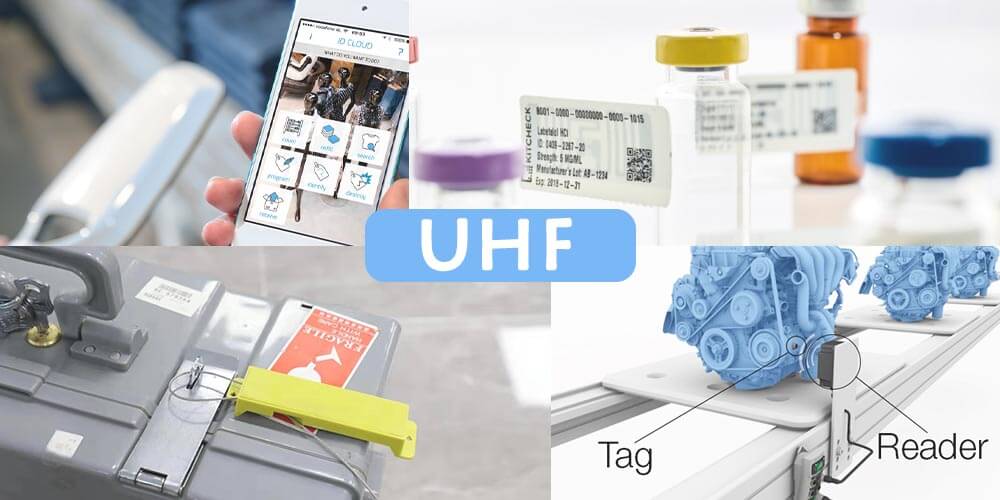
UHF RFID system works optimally in a frequency range of 300 MHz and 3 GHz. It has a read range of up to 12 meters. Due to its powerful transponder, UHF RFID tags have faster data transfer rates and are ideal if you need relatively quick communication.
While UHF technology offers a better read range, it is highly susceptible to interference from liquids, metals, and electromagnetic signals. However, there are current versions that have found ways to mitigate the problem.
The UHF RFID tags are relatively cheap and are used in different sectors, including:
- Retail inventory management
- Pharmaceutical tracking
- Supply chain management
- Transportation logistics (air, containers, and railway systems)
- Production automation
Additionally, these tags conform to several international standards, including EPC Global, ISO/IEC 18000-6, and Ubiquitous ID.
High-Frequency Passive RFID

These tags operate in a 3 MHz to 30 MHz frequency range. They offer a read range of 30 cm to 1 meter, depending on the transponder’s strength.
This technology is used in Near Field Communication devices. Other common applications include:
- Library management system
- Smart shelf management in the retail sector
- Management of door locks in the hospitality sector
- Three-meter pre-charging system
- Fixed asset management
Most smart payment and security cards use HF technology. It meets the ISO/IEC 14443 (ideal for MIFARE), ISO 15693, ISO/IEC 18092, ECMA-340, and ISO 1443A.
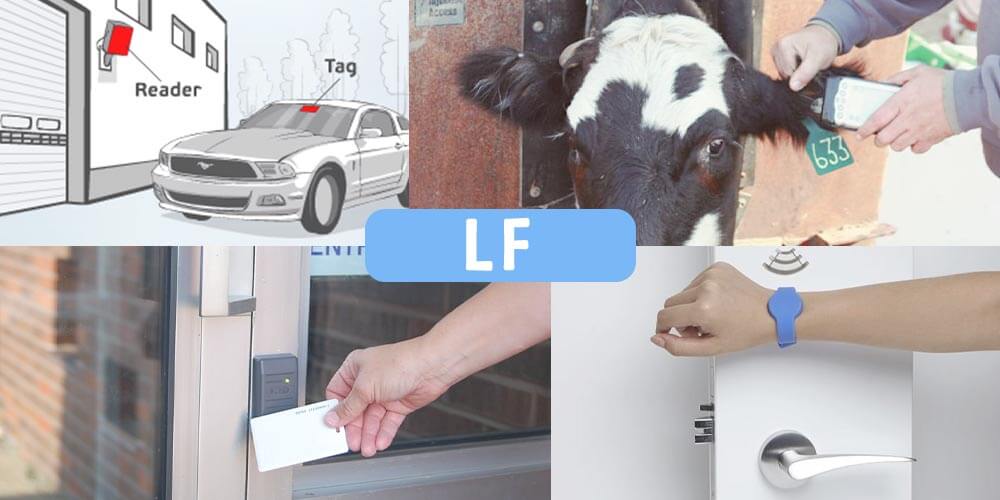
LF tags operate in a frequency range of 30 kHz to 300 kHz. Most manufacturers design the tags to operate in the 125 kHz or 134.2 kHz range. The tags have a relatively short read range of a few centimeters to a few meters depending on the transponder’s size in use.
Despite their short read range, these tags are not affected by a metallic and aqueous environment. They are regulated by ISO 14223 and ISO/IEC 1800-2 standards to ensure that they perform optimally within the acceptable read range.
Key Features of LF RFID Tags
- They penetrate most materials, including body tissues and water. This feature makes the LF tags ideal for animal identification.
- Easy to embed on non-metallic materials such as cards and wristbands
- Low data transfer rate leading to slower communication
- It is easily affected by electrical noise. The feature limits its use in an industrial environment.
- Relatively expensive transponders. Also, the LF technology can only read one transponder at a time.
Most access controls are based on LF key tags, badges, and contactless cards. For example, read-only transponder cards are used in the corporate sector for identification.
If you need a card that identifies and stores data for security reasons, you can get the LF to read/ write a contactless card.
Other areas of application include:
- Livestock management
- Automobile industry. Immobilizers and keyless door operating system
- Automated parking systems
- Access control systems and security management
Even better, the LF RFID system conforms to international standards, including ISO 11784, ISO 11785, ISO 14223-1, ISO 14223-2, ISO 18000-2, and DIN 30745.
Determinants of RFID Tag Performance
While many external and internal factors can affect the RFID tag performance, here are the three key ones:
- Type of RFID Transponders
For the RFID technology to work, there must be sending and receiving of signals. The device that is responsible for this is called the transponder. It is embedded in the tag to guarantee functionality.
Both passive transponders and active transponders use the same concept. They work upon receiving a read-only or a read/write signal from another unit. The stronger the transponder, the more effective it will be.
- Environmental Factors
Like we’ve already discussed, UHF tags are affected by water, electromagnetic waves, and metals. Using these tags in these environments will affect their performance adversely.
If you must use the UHF tags, ensure that you get ones that have been modified to work optimally under such environments. However, no modification has managed to eliminate the error entirely.
- Tag Type
The tag you’re using affects the read ranges. If you’re using a passive tag to track an asset 100 meters away, you can be sure that you’ll get defective results.
Always choose a tag based on your needs. Also, ensure that you modify it to suit the needs of your organization. For example, you can use a wristband for employee identification. This will enhance functionality since it reduces the chances of loss/misplacement.
RFID Tag Range
Different RFID tags have different read distances/ranges. Here are some of the factors that determine the range of RFID tag:
- The operating frequency
- The settings of the RFID reader
- The nature of the antenna –polarization, IP rating, size, type, center frequency, gain (, and VSWR
- Size, tune, shape, and polarization of the tag. Other features of a tag that may affect its range include the material used and its thickness
- Environment
- Material where the RFID tag is attached
Overall, the RFID tags read distance can be summarized below: LF Passive RFID (125 kHz and 134.2 kHz). These tags have a read distance of 10-30 cm. The large ones can achieve 2 meters read distance when attached to a metal.
- High-Frequency RFID Tags. These passive tags achieve 1-1.5 meters read distance. For you to achieve the 1.5 meters, you need approximately 1 watt of RFID output power.
- Ultra-High Frequency Tags. When using these tags, you achieve 1-12 meters read distance. However, they can be modified to increase the read distance to approximately 50 meters.
If you’re using active RFID tags, you will get a more read range. For example, an ordinary active tag will achieve up to 100 meters read range. If modified, it will achieve more, as shown below:
- Super High-Frequency Active (2.45 GHz). These tags can give you up to a 150-meter read range.
- Ultra High-Frequency Active (433 MHz). These tags achieve up to a 500-meter read range.
How to Choose RFID TAG
The tag you choose depends on your needs. However, you should always consider the following factors (as detailed in this article) before choosing your ideal RFID tag:
- Operating Frequency. Do you need low frequency, high frequency, or ultra-high frequency tags?
- Environmental conditions. Some tags, such as UHF, do not work well in wet and metallic environment.
- Memory capacity
- Mounting space and method
- RFID standards compliance
When choosing your best RFID tag, you should ensure that it offers the ideal read range to help you achieve your goals. For example, buying a passive tag to track mobile assets will not yield the desired results.
The types of transponders based on functionality include:
- Read Only (R/O). These are pre-programmed transponders that have a unique identification. They only read the data and transmit it as it is. They are relatively cheaper since they do not have much memory.
- Read Write (R/W). These transponders are used in tags that require dynamic data storage. When using this tag, the data can be updated dynamically to suit the needs of the user.
- Write Once Read Many Times (WORM). These are transponders that allow identification numbers to be written once. While this information cannot be changed, it can be read many times.
Even better, transponders come in different sizes and shapes. This makes it possible to customize your tag to suit your desires.
How Much Information Can an RFID Tag Store?
The RFID tag storage capacity depends on several factors, including the type and application of the tag. A license plate tag will have either a 986-bit or 128-bit serial number. The most common tag in the market is a 96-bit EPC license plate.
Overall, the most information a tag can carry at any given time is 2 kilobytes. The higher the storage space a tag has, the more expensive it will be.
On special occasions, passive UHF tags with 4 KB and 8 KB capacity can be availed when large amounts of information must be stored. This is a common practice in the aerospace industry.
What is a Tag collision?
Tag collision occurs when a reader energizes multiple RFID tags at the same time. As a result, the tags will send their signals back to the reader simultaneously.
This phenomenon occurs when there are many tags within the same electromagnetic field. A large number of signals overwhelms the RFID reader, and it is unable to differentiate them.
Fortunately, manufacturers have made anti-collision readers designed to detect collisions. Once a collision occurs, the reader generates a unique number for each tag, ensuring that they send data at different times.
RFID Tag Price and Where to Buy One
RFID tags are available in many tech stores globally. Also, you can get them from online stores, such as Amazon, AliExpress, and Alibaba.
The price of an RFID tag is dependent on many factors, such as:
- Type of the Tag. Generally, active tags are more expensive than passive tags.
- Features of the Tag. Tags come with different memories, read ranges, security features, and data transfer rates, among other unique features.
- Volume. Most vendors tend to offer discounts on customers purchasing large volumes of RFID tags.
- Packaging. Do you want your RFID tag as a card, a badge, or any other form? Well, this will determine the eventual cost of your tags.
On estimation, an RFID tag can cost anywhere between $10 and $100 depending on the factors listed above.
The Bottom Line
Buying an RFID tag will ease your business operations. However, you must get the right one to achieve all your objectives.
Some of the factors that you should consider before buying your RFID tag include the read range, type of substrate, transponder strength, among other factors.
As such, you should read through this comprehensive guide and implement all the tips when purchasing your best RFID tag. If you’re wondering how an RFID tag will improve your business, then this article will answer all your questions. It gives all the details you need to know about the technology candidly.

